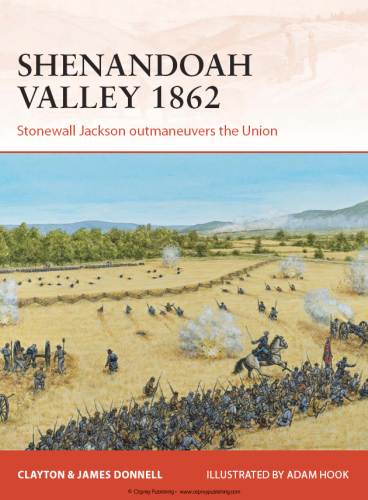Clayton Donnell, "Shenandoah Valley 1862: Stonewall Jackson outmaneuvers the Union (Campaign Series)"
ISBN: 1780963785 | 2013 | EPUB | 96 pages | 56 MB
"Stonewall" Jackson's Valley Campaign saw a Confederate Army outmaneuver and defeat three times their number of Union troops in a lightning-swift campaign in the following battles: First Kernstown, McDowell, Front Royal, First Winchester, Cross Keys, Port Republic.
On the morning of June 9 1862, victorious Confederate troops under the command of Major General "Stonewall" Jackson began a general advance in pursuit of the withdrawing Union forces following the battle of Port Republic. This was the sixth major battle fought between Union and Confederate troops during a three-month period in the Shenandoah Valley of Virginia in the spring of 1862. It was also, effectively, the final battle of what became known as Jackson's Valley Campaign. The campaign, which had begun with a Confederate defeat at the First Battle of Kernstown on March 23, became a showcase for the maneuverability and mobility of Jackson's forces as, heavily outnumbered, they kept the larger Union forces pinned and down and off balance.
"Stonewall" Jackson had performed his task of keeping General McDowell's Union forces away from the Peninsula Campaign better than anyone could have expected, and following his final victory at Port Republic he was able to force march his men to join up with Lee at Richmond in time to take part in the Seven Days Battles that saved Richmond for the Confederacy.
Jackson became a legend for his actions in the Valley Campaign. His army marched over 600 miles in 48 days to win five major battles. His forces, at no time numbering more than 17,000 men, overwhelmed a combined Union force of 50,000, demonstrating in every case his ability to maneuver his troops into a tactical advantage of at least four to three.



